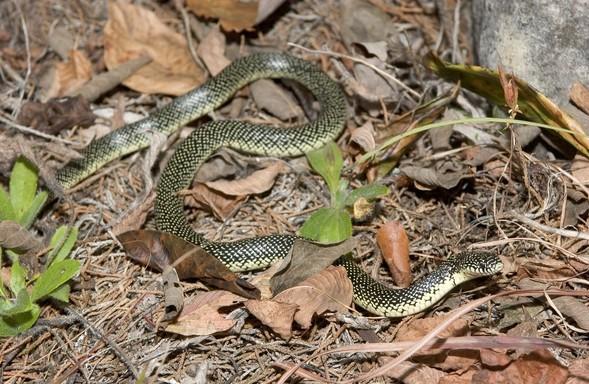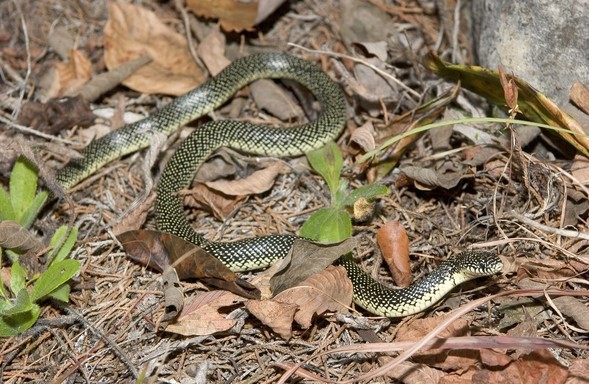
Xplor reconnects kids to nature and helps them find adventure in their own backyard. Free to residents of Missouri.


































Stay in Touch with MDC news, newsletters, events, and manage your subscription

Xplor reconnects kids to nature and helps them find adventure in their own backyard. Free to residents of Missouri.

A monthly publication about conservation in Missouri. Started in 1938, the printed magazine is free to residents of Missouri.


CAPE GIRARDEAU, Mo. – Missouri Department of Conservation (MDC) naturalists say snakes have a vital role in the wild and have tips to share on how to avoid negative snake encounters. Protective footwear, being aware of the surroundings and learning to identify snake species are the first steps toward protecting yourself as well as resident snakes.
“Snakes get a bad reputation because people tend to be afraid of them,” said Jamie Koehler, assistant manager at MDC’s Cape Girardeau Conservation Nature Center. “However, they’re protected in our state because they’re so valuable and if we learn to identify and respect them, they’re no trouble.”
Few Missourians realize that all native Missouri snakes are protected. The Wildlife Code of Missouri treats snakes, lizards, and most turtles as nongame. This means that there is no open season on these animals, and it is technically unlawful to kill them. There is a realistic exception, however: when a venomous snake is in close association with people, which could result in someone being bitten.
“We hope more people realize that snakes are interesting, valuable, and, for the most part, harmless,” Koehler said.
Contrary to popular belief, snakes do not go looking for people to bite. In fact, snakes are afraid of people. With that in mind, Koehler said there are simple rules people can follow to reduce chances of interacting with snakes in the wild.
First, know where snakes tend to be, such as in swamps, marshes and bluffs, so you can watch out for them. Second, wear protective footwear when in areas where snakes tend to be. Thick leather or rubber boots, or high-top hiking shoes will protect feet, ankles and lower legs. Third, never place hands under rocks or logs, and don’t step over rocks or logs.
“It’s best to step on the rock or log first, then go over, so you don’t frighten a resting snake,” Koehler said.
Next, step lively when hiking. Look over the ground, around large rocks or logs. Lastly, Koehler said learning to identify venomous and nonvenomous snakes is a valuable skill. Only six of the 49 snake species native to Missouri are venomous. Harmless snakes have round pupils, where venomous snakes have elliptical shaped pupils.
“Venomous snakes have a characteristic sensory pit located between the eye and nostril of each side of the head, which is fairly easy to see,” Koehler said. “They also have well developed fangs on the front of their upper jaw.”
However, Koehler said the best method to avoid interacting with a venomous snake, is to leave all snakes in the wild alone.
“Snakes don’t want to be around us in the wild and though it may be tempting to try to get a close look, that’s not a safe thing to do,” she said.
Koehler added that a safe place to get a close look at several snake species native to Missouri is the Cape Girardeau Conservation Nature Center, located in Cape County Park North.
“At the nature center, we have both venomous and nonvenomous snakes to view and we also have the center’s famous two-head black rat snake on display,” she said. “Leave the snake interactions to your trip to the nature center and avoid them in the wild.”
Snakes play an important role in controlling rodent populations, and they also serve as a food source for other wildlife, such as hawks, owls, mink, skunks, and herons. Some snakes even eat other snakes. Kingsnakes, which are immune to the venom of our venomous snakes, will kill and consume them if given the opportunity. Although many of our harmless snakes will bite to defend themselves, usually their bite produces nothing more than simple scratches.
More information about snakes can be found at https://nature.mdc.mo.gov/discover-nature/general-species-information/amphibian-and-reptile-facts/snake-facts. More information about the Cape Girardeau Conservation Nature Center can be found at www.mdc.mo.gov/capenaturecenter.